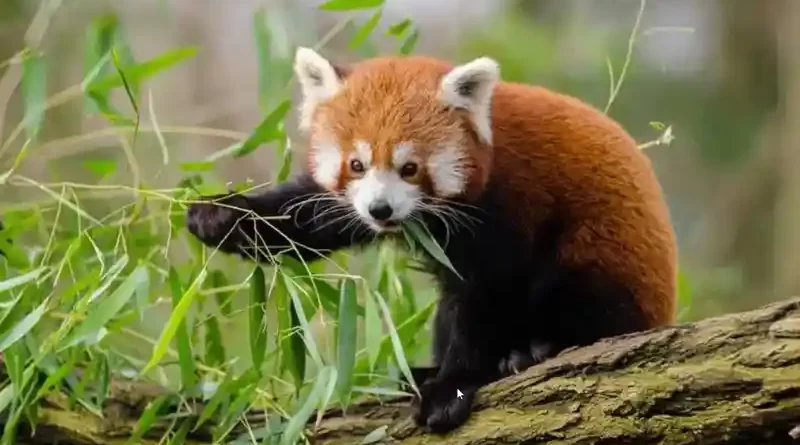Unveiling 40 Remarkable Facts of the Red Panda
The Wondrous World of Red Pandas: Unveiling 40 Remarkable Facts
Have you ever stumbled upon an enchanting creature you couldn’t help but fall in love with? Enter the world of red pandas, those adorable “fire foxes” and “lesser pandas” with faces that can melt the coldest of hearts. Today, we’re on a journey to uncover 40 captivating facts about these charming little beings that have enchanted people all around the globe.Quick Tips for Red Panda Enthusiasts
Before we embark on this adventure, here are some quick tips for those who are already obsessed or curious about these charming creatures:- Red Panda Getaways: If you’ve got a soft spot for red pandas, why not plan a visit to a sanctuary or zoo where these darlings reside? It’s a fantastic way to get up close and personal with these fluffballs while supporting their conservation efforts.
- Join the Red Panda Brigade: Many organizations are dedicated to the noble cause of safeguarding red pandas and their natural habitats. Donating to or volunteering with these groups can make a world of difference.
- The Bamboo Chronicles: Red pandas are bamboo aficionados. Learning about their diet is like uncovering a culinary secret, and it’s vital for their conservation.
- Spread the Panda Love: Share your newfound red panda wisdom with your friends and family. You’ll be amazed at how these facts can spark curiosity and appreciation.
-
Top 40 Fascinating Facts about Red Pandas
# Category Detail 1 Family Classification Ailuridae, distinct from giant pandas. 2 Alternate Names Known as “fire foxes” and “lesser pandas.” 3 Scientific Name Ailurus fulgens, meaning “shining cat” in Latin. 4 Fur Color Variations Ranges from rust-red to chestnut. 5 Distinctive Tail Long, bushy tail with red and white rings. 6 Facial Markings Mask-like, extending from eyes to cheeks and snout. 7 Habitat Range Native to the eastern Himalayas and southwestern China. 8 Adaptation to Altitude Suited for cold, high-altitude environments. 9 Solitary Nature Prefer a quiet, secluded lifestyle. 10 Nocturnal Behavior Most active at night for hunting and foraging. 11 Daytime Resting Often in tree hollows or dense foliage. 12 Primary Diet Bamboo. 13 Thumb-Like Wrist Bone Unique adaptation for grasping bamboo. 14 Diet Diversity Includes fruits, berries, acorns, insects. 15 Climbing Prowess Excellent climbers with semi-retractable claws. 16 Scent Marking Establishes territory and communicates with others. 17 Territorial Behavior Exhibits protective behaviors for their territory. 18 Cub Protection Mothers are highly protective of their young. 19 Cub Dependency Cubs rely on mothers for months. 20 Lifespan in the Wild Typically 8-10 years. 21 Lifespan in Captivity Up to 15 years or more. 22 Characteristically Slow Movements Deliberate and unhurried. 23 Ability to Stand on Hind Legs Unique capability for food or surveying. 24 Keen Sense of Smell Aids in locating food and sensing danger. 25 Swimming Abilities Capable swimmers. 26 Vocalizations Soft vocalizations like squeaks and chirps. 27 Use of Tail for Balance Crucial for navigating branches. 28 Sleeping Habits Curl up with tail wrapped for warmth. 29 Endangered Status Classified as endangered by the IUCN. 30 Threat of Habitat Loss Primarily due to deforestation. 31 Risk from Poaching and Pet Trade Illegal trade and poaching. 32 Importance of Conservation Efforts Vital for survival. 33 Cultural Significance Especially in regions like Nepal. 34 Representation in Pop Culture Featured in various media. 35 Educational Role of Zoos Raise awareness and support conservation. 36 Adaptable Diet Includes small mammals, birds, eggs. 37 Expert Tree Navigators Due to agility and claw structure. 38 Communication through Scent Marking For social interactions. 39 Increased Longevity in Captivity Provides insights for research. 40 Unique Taxonomic Position Reflects distinctive characteristics.
Deeper Dive into Red Pandas
Taxonomy and Classification
First, let’s clear up the misconception: red pandas are not distant cousins of giant pandas. They have their own VIP membership in the animal kingdom as members of the Ailuridae family.Physical Characteristics
Imagine a fluffy ball of rust-red or chestnut fur with a luxurious tail adorned with alternating red and white rings. Add charming facial markings, and you’ve got a red panda that could rival the cuteness of any Hollywood starlet.Natural Habitat
These forest-dwelling dynamos are native to the eastern Himalayas and southwestern China. They’ve aced the art of thriving in chilly, high-altitude climes and dense temperate forests.Behavior and Lifestyle
Red pandas are the introverts of the animal kingdom. Solitary by nature, they prefer a quiet life in the treetops. There are no night owls here, as they’re most active when the moonlight takes center stage.Diet and Feeding Habits
The bamboo buffet is where it’s at for red pandas. They’ve got some gourmet taste buds, too! Besides bamboo, they relish fruits, berries, acorns, and the occasional insect for a protein boost.Reproduction
Love is in the air during mating season, and after a gestation period that rivals human pregnancies (112-158 days), it’s baby time! Moms guard their cubs like prized treasures until they’re ready to face the world.Conservation Status
Here comes the not-so-fun part: red pandas are in hot water. Habitat loss due to deforestation, poaching, and climate change are pushing them to the brink. Enter the endangered species list.Cultural Significance
Imagine living where red pandas roam freely. In Nepal, they’re associated with the Sherpa people and are considered sacred beings. Local folklore and traditions weave enchanting tales around them. Red Pandas in Popular Culture From Disney’s “Mulan” to books, cartoons, and even zoo encounters, red pandas are the show’s stars. Their cuteness factor knows no bounds, making them darlings of the entertainment world.Lesser-Known Red Panda Facts
Let’s dive into the exclusive club of lesser-known facts:- Versatile Eaters: Red pandas won’t turn down a menu upgrade. When bamboo is in short supply, they dine on small mammals, birds, and eggs.
- Treetop Dwellers: They’re like ninjas in the treetops, with semi-retractable claws that make climbing look like a walk in the park.
- Scent-Sational Signatures: Red pandas claim their turf through scent marking, using glands on their rear end and the soles of their feet.
- Longevity Tale: They typically celebrate 8-10 birthdays in the wild, while their captive counterparts can reach their mid-teens. Talk about a long and fruitful life!
- Shining Cat Mystery: The name Ailurus fulgens might sound like a spell from a fantasy novel, but it translates to “shining cat,” giving a nod to their cat-like appearance.
Red Pandas vs. Giant Pandas
Let’s settle the score between these two pandas once and for all:| Aspect | Red Pandas | Giant Pandas |
| Taxonomic Family | Ailuridae | Ursidae |
| Diet | Primarily herbivorous | Mainly herbivorous, mostly bamboo |
| Appearance | Smaller, reddish fur, bushy tail | More significant, black and white coloration |
| Behavior | Solitary, nocturnal, arboreal | Solitary, mainly terrestrial |
Conservation Efforts
If you want to don your conservation cape, consider supporting organizations like the Red Panda Network and the World Wildlife Fund. Your contribution can be a game-changer for these charming conservation heroes.Conclusion
So, there you have it—a whirlwind tour of 40 fascinating facts about red pandas. These little dynamos have a story worth sharing, from their striking appearance to their intriguing behaviors. As we conclude our journey, let’s remember to cherish and protect these marvelous creatures, ensuring their enchanting presence in our world for generations to come.
FAQ
What are red pandas?
Red pandas are small, tree-dwelling mammals native to the eastern Himalayas and southwestern China. They belong to the Ailuridae family and are known for their distinct rust-red fur, bushy tails, and adorable mask-like facial markings. Despite their name, they are not closely related to giant pandas.
What do red pandas eat?
Red pandas primarily feed on bamboo. However, they have a varied diet that also includes fruits, berries, acorns, and occasionally insects and small mammals. This varied diet is essential for their nutrition, especially in habitats where bamboo might not always be abundant.
Are red pandas endangered?
Yes, red pandas are classified as endangered by the International Union for Conservation of Nature (IUCN). Their population is declining due to habitat loss, deforestation, poaching, and the illegal pet trade. Conservation efforts are crucial to protect these unique animals.
How long do red pandas live?
In the wild, red pandas typically live for about 8-10 years. However, in captivity, with proper care, they can live up to 15 years or more. Their lifespan in zoos and sanctuaries often extends due to regular veterinary care and a stable food supply.
Can red pandas be kept as pets?
No, red pandas should not be kept as pets. They are wild animals with specific dietary and environmental needs that are difficult to meet in a household setting. Additionally, keeping red pandas as pets contributes to their decline in the wild and is illegal in many places.




